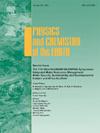Multicriteria evaluation of cropland suitability using multisource datasets of satellite remote sensing and ground observation
IF 3
3区 地球科学
Q2 GEOSCIENCES, MULTIDISCIPLINARY
引用次数: 0
Abstract
The potential of agriculture land monitoring serves as the lifeblood of communities, nourishing populations and fostering economic growth on a global scale. Towards the advancement of the computational approach, this study employed an analytical hierarchal process modeling for agriculture land suitability assessment by integrating a comprehensive array of 4 major criteria with a decision matrix, including 19 influencing parameters. This research incorporates the field data, including soil chemical and physical properties, irrigation water accessibility and irrigation water quality parameters, which are analyzed with cutting-edge remote sensing data layers and climatic variables using an integrated modelling approach. Thorough field observations and integrated methodology improved the conventional practices by considering the close interactions between soil, irrigation water, cropland and topography. The most innovative aspect of this research is based upon the seamless fusion of data layers of different datasets, which improves agriculture's suitability. Pairwise comparisons are systematically conducted to assign weights to each parameter, ensuring a robust decision-support framework with weighted overlay. The finding showed that the 72209.03 acres (9.13 %) cropland is highly suitable, whereas the 717738.48 acres (90.77 %) area is suitable, and the 788.49 acres (0.1 %) area is less suitable for crop cultivation. The study emphasizes the significance of each parameter in influencing suitability, contributing valuable insights into sustainable land management practices. The findings provide meaningful information for policymakers, land use planners and agriculture stakeholders interested in optimizing land management strategies to ensure sustainable agriculture development.
基于多源卫星遥感和地面观测数据集的农田适宜性多准则评价
农业用地监测的潜力是社区的命脉,在全球范围内滋养人口并促进经济增长。在计算方法的基础上,本研究采用层次分析法对农用地适宜性评价进行建模,将包含19个影响参数的4个主要评价指标与决策矩阵相结合。本研究结合现场数据,包括土壤化学和物理性质、灌溉水可达性和灌溉水质量参数,利用先进的遥感数据层和气候变量,采用综合建模方法进行分析。深入的实地观察和综合方法通过考虑土壤、灌溉水、农田和地形之间的密切相互作用,改进了传统的做法。本研究最具创新性的方面是基于不同数据集数据层的无缝融合,从而提高了农业的适用性。系统地进行两两比较,为每个参数分配权重,确保具有加权覆盖的鲁棒决策支持框架。结果表明:72209.03亩(9.13%)的耕地高度适宜种植,717738.48亩(90.77%)的耕地适宜种植,788.49亩(0.1%)的耕地不适宜种植。该研究强调了每个参数在影响适宜性方面的重要性,为可持续土地管理实践提供了宝贵的见解。研究结果为决策者、土地利用规划者和对优化土地管理战略以确保农业可持续发展感兴趣的农业利益相关者提供了有意义的信息。
本文章由计算机程序翻译,如有差异,请以英文原文为准。
求助全文
约1分钟内获得全文
求助全文
来源期刊

Physics and Chemistry of the Earth
地学-地球科学综合
CiteScore
5.40
自引率
2.70%
发文量
176
审稿时长
31.6 weeks
期刊介绍:
Physics and Chemistry of the Earth is an international interdisciplinary journal for the rapid publication of collections of refereed communications in separate thematic issues, either stemming from scientific meetings, or, especially compiled for the occasion. There is no restriction on the length of articles published in the journal. Physics and Chemistry of the Earth incorporates the separate Parts A, B and C which existed until the end of 2001.
Please note: the Editors are unable to consider submissions that are not invited or linked to a thematic issue. Please do not submit unsolicited papers.
The journal covers the following subject areas:
-Solid Earth and Geodesy:
(geology, geochemistry, tectonophysics, seismology, volcanology, palaeomagnetism and rock magnetism, electromagnetism and potential fields, marine and environmental geosciences as well as geodesy).
-Hydrology, Oceans and Atmosphere:
(hydrology and water resources research, engineering and management, oceanography and oceanic chemistry, shelf, sea, lake and river sciences, meteorology and atmospheric sciences incl. chemistry as well as climatology and glaciology).
-Solar-Terrestrial and Planetary Science:
(solar, heliospheric and solar-planetary sciences, geology, geophysics and atmospheric sciences of planets, satellites and small bodies as well as cosmochemistry and exobiology).
 求助内容:
求助内容: 应助结果提醒方式:
应助结果提醒方式:


